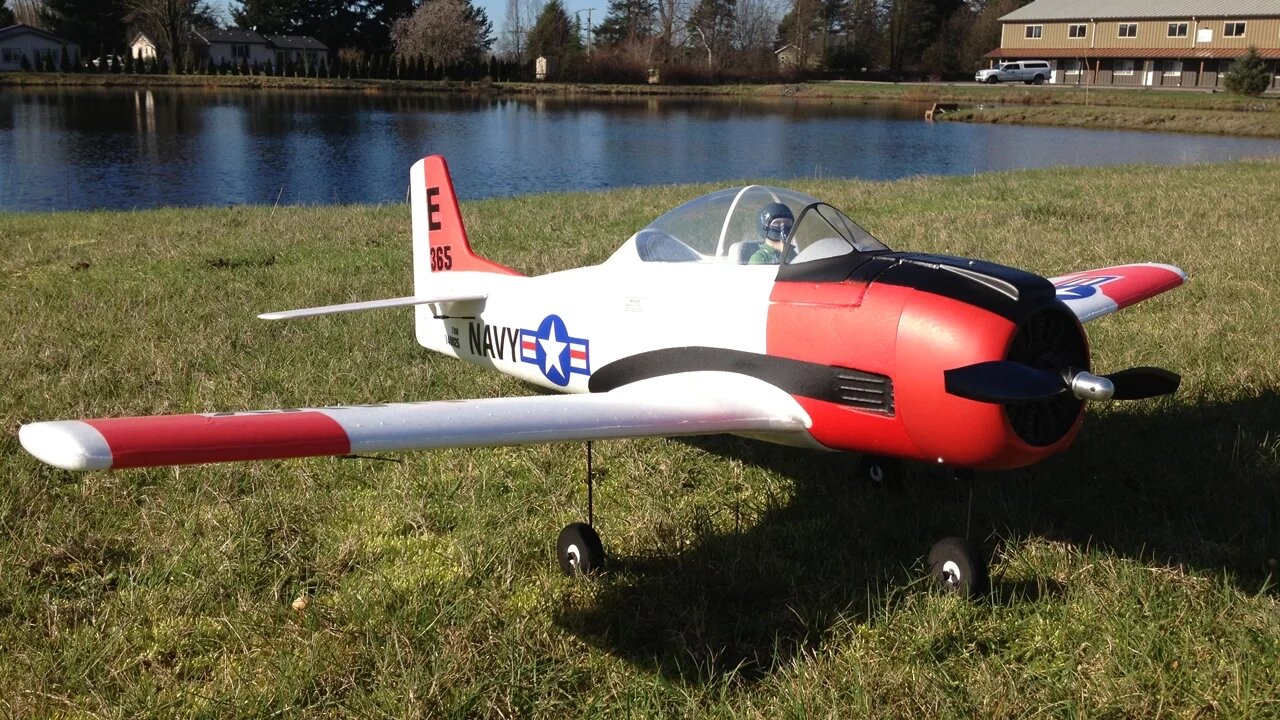Premium Only Content

Trojan Mayhem with our Parkzone T-28 Trojan Parkflyers on a Bright and Beautiful Day
This is a pretty fun vid that is worth the watch if you have a few minutes. It has John, Shawn, and I all flying our Parkzone T-28 Parkflyers out at the "Loop"!
Link to plane: https://amzn.to/2XaOdkk
Here is a link to my Amazon Store to help support the channel and keep it independent: https://www.amazon.com/shop/gblyndensrc
This video was made using the equipment noted below and can be purchased on Amazon through my Amazon Affiliate links below:
RC Equipment Used In This Video:
- Parkzone T-28 Trojan: https://amzn.to/2XaOdkk
- Spektrum DX6 Radio: https://amzn.to/2RgoDes
The video shows clips of each of us and some of us at the same time with the North American T-28 Trojan RC Plane replica. I also tried to do a lot of scale flight as well since John took up plenty of the video showing off his skills with his plane.
This RC Plane Park Flyer is brought to us by RC juggernaut Horizon Hobby. This is also considered by many to be the single best Parkflyer they have ever released under their Parkzone brand. I agree except for the Parkzone Wildcat is right there with it in my opinion. This version is a United States Navy paint scheme that looks very pretty in my opinion on this T-28D warbird.
Also, mine is the PNP (Plug-N-Play) RC model instead of the BNF like I normally buy and I use an AR600 receiver in this PZ T-28 Parkflyer.
Here is some history on this Navy Trainer plane via Wikipedia:
Operational History
After becoming adopted as a primary trainer by the USAF, the United States Navy and Marine Corps adopted it as well. Although the Air Force phased out the aircraft out of primary pilot training by the early 1960s, continuing use only for limited training of special operations aircrews and for primary training of select foreign military personnel, the aircraft continued to be used as a primary trainer by the Navy (and by default, the Marine Corps and Coast Guard) well into the early 1980s.
The largest single concentration of this aircraft was employed by the U.S. Navy at NAS Whiting Field in Milton, Florida, in the training of student naval aviators. The T-28's service career in the U.S. military ended with the completion of the phase in of the T-34C turboprop trainer. The last U.S. Navy training squadron to fly the T-28 was VT-27, based at NAS Corpus Christi, Texas, flying the last T-28 training flight in early 1984. The last T-28 in the Training Command, BuNo 137796, departed for Naval District Washington on 14 March 1984 to be displayed permanently at Naval Support Facility Anacostia, D.C.[3] Many T-28s were subsequently sold to private civil operators, and due to their reasonable operating costs are often found flying as warbirds today.
Vietnam War
In 1963, a Laotian Air Force T-28 piloted by Lieutenant Chert Saibory, a Thai national, defected to North Vietnam. Saibory was immediately imprisoned and his aircraft was impounded. Within six months the T-28 was refurbished and commissioned into the North Vietnamese Air Force as its first fighter aircraft.[5]
T-28s were supplied to the South Vietnamese Air Force in support of ARVN ground operations, seeing extensive service during the Vietnam War in VNAF hands, as well as the Secret War in Laos. A T-28 Trojan was the first US fixed wing attack aircraft (non-transport type) lost in South Vietnam, during the Vietnam War. Capt. Robert L. Simpson, USAF, Detachment 2A, lst Air Commando Group, and Lt. Hoa, SVNAF, were shot down by ground fire on August 28, 1962 while flying Close Air Support (CAS). Neither crewman survived. The USAF lost 23 T-28s to all causes during the war, with the last two losses occurring in 1968.[6]
Other Uses
T-28s were also used by the CIA in the former Belgian Congo during the 1960s.[7] France used locally re-manufactured Trojans for close support missions in Algeria.[8] The Philippines utilized T-28s (colloquially known as "Tora-toras") during the 1989 Philippine coup attempt, the aircraft were often deployed as dive bombers by rebel forces.
-
 5:03
5:03
GBLynden's RC
1 year ago112MPH FMS Flash 850mm RC Speed Plane | Unboxing & Overview
184 -
 LIVE
LIVE
IsaacButterfield
4 hours agoAustralia Under Attack | Trump's State of the Union | All LGBTQ Cast (W Guest Frenchy)
233 watching -
 LIVE
LIVE
Edge of Wonder
4 hours agoIs Your Car Collecting Your Biodata? Whistleblower Exposes Dark Agenda
513 watching -
 LIVE
LIVE
Quite Frankly
7 hours ago"News Round-Up, Celebrity Stories, Friday Extras" ft. J Gulinello 3/7/25
1,287 watching -
 55:49
55:49
LFA TV
1 day agoGermany Started Two World Wars and Now Wants Nuclear Weapons | TRUMPET DAILY 3.7.25 7PM
20.6K14 -
 1:34:38
1:34:38
2 MIKES LIVE
3 hours ago2 MIKES LIVE #189 Open Mike Friday (Sort Of)
16K -
 1:48:14
1:48:14
Right Side Broadcasting Network
11 hours agoLIVE REPLAY: President Trump Delivers Remarks at The White House Digital Assets Summit - 3/7/25
128K41 -
 2:07:17
2:07:17
The Quartering
8 hours agoTrump Goes Ballistic On Russia & Ukraine Gets Results, Democrat Cringe, FBI Arrests Military Men
127K76 -
 1:33:20
1:33:20
Sean Unpaved
7 hours agoWhat Could The 2025 NFL Draft & Season Look Like with Special Guest 2x Super Bowl Champ Phil Simms
47K6 -
 22:48
22:48
The Rad Factory
10 hours ago $1.58 earnedIs Temu 125cc Dirt Bike Worth $1000?
24.8K14